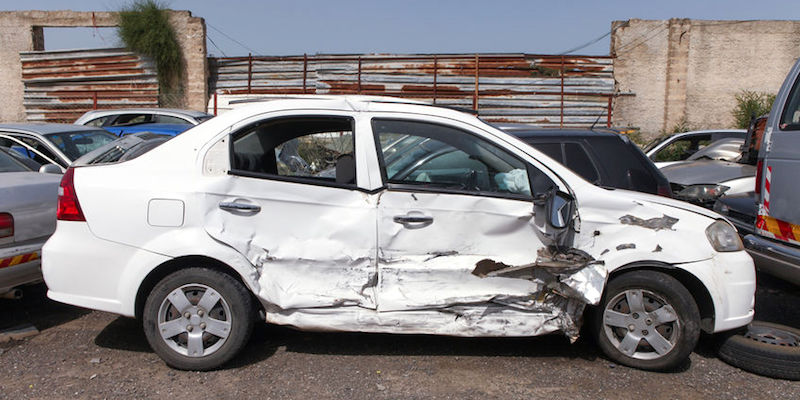According to the IIHS, side-impact accidents account for about one-fourth of the passenger vehicle occupant deaths in the U.S.
Children in Car Seats Are Frequent Victims of T-Bone Accidents
Side-impact collisions, which happen when one motorist fails to stop or yield the right of way at an intersection and crashes into the side of another vehicle, are fairly common and can lead to serious injuries. One reason that side-impact crashes result in such serious injuries is that the vehicles involved are often knocked off-course to potentially collide with a guardrail, telephone pole, or oncoming traffic.
Side-Impact Accidents Can Be Deadly
According to the Insurance Institute for Highway Safety (IIHS), side-impact collisions account for about one-fourth of the passenger vehicle occupant deaths in the U.S. Protecting those involved in side crashes is challenging, because unlike the front and rear of a vehicle, the sides have relatively little space to absorb energy and protect vehicle occupants from injury.
Data compiled by the National Highways Traffic Safety Administration (NHTSA) indicates that side-impact collisions are the deadliest for children riding in car seats. In 2014, the NHTSA announced that it was upgrading the federal standards for car seats sold in the U.S. by requiring that they pass a first-ever side-impact crash test. Prior to this recommendation, car seats were subjected only to front- and rear-collision tests.
But automakers have made progress in side-impact protection by installing side airbags, which are designed to keep a vehicle’s occupants from striking the inside of the vehicle and objects on the outside. Side airbags, which are now standard on most new passenger cars, also spread the impact over a larger area of an occupant’s body, although strong vehicle structure is also necessary for maximum protection.
Injuries Resulting From Side-Impact Accidents
T-bone collisions frequently cause injuries to certain areas of the body, such as the:
- Chest
- Upper and lower extremities
- Head and face
- Abdomen and pelvis
Side impact-collisions can cause serious injuries, even at relatively low speeds (30 miles per hour or less). People who sustain the most severe injuries in such collisions are usually those who collide with the door panel on the side where the impact occurs. Occupants on the other side of the vehicle are typically injured when they are thrown against the driver or person sitting next to them and then rebound into the “B pillar,” the upright pillar immediately behind the front door, where the seatbelt is attached.
Establishing Fault in a Colorado T-Bone Accident
In some cases, it is relatively simple to assign fault for a side-impact collision, depending on the location of the car accident and the circumstances surrounding the crash. For instance, if one vehicle was hit by another while making a left turn at an intersection, the driver of the other vehicle would be considered at fault if it could be shown that he or she ran a red light.
One driver will often try to blame the other motorist for a side-impact collision, claiming the right of way. Insurance companies are often required to conduct a full investigation of the scene, reviewing the path of each vehicle by assessing skid marks, yaw marks, gouge marks, tire marks, and signs of impact, and assign blame accordingly.
If you suffered serious injuries in a side-impact collision, contact Colorado personal injury attorney Dan Rosen for a free consultation and competent legal advice.

